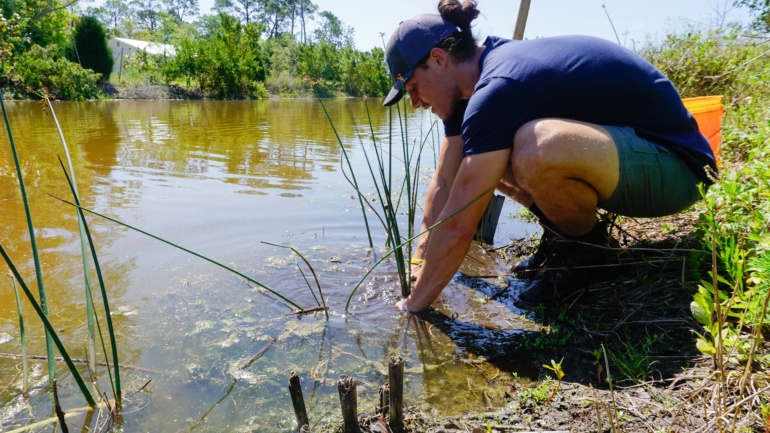By Hoang-Nam Vu, Staff Writer for Save The Water™ | February 15, 2016, Updated December 18, 2021
The town of Flint is located in the mid-eastern section of Michigan, just northwest of Detroit. Flint surfaced in headlines about a year ago, based on a pressing water crisis. With one of the lowest poverty rates in the country, the Flint government struggled with the rising cost of water. Detroit Public Schools emergency manager Darnell Earley, appointed by Michigan governor Rick Snyder, chose to switch water supplies from the Detroit water system to the nearby Flint river. This was a temporary measure meant to be taken while the city established a regional water pipeline.
Related reading: Benton Harbor Lead Pollution Highlights Outdated Water Infrastructure
This temporary endeavor has since catapulted Flint into the national spotlight. Soon after the transition was made, residents began complaining about the quality of the water, noting its strange color, taste, and smell. With proceeding investigations, it was found that the Flint river, and therefore the water being supplied to the community, was contaminated with almost unprecedented amounts of lead. Since then, state officials have admitted [that] the DEQ [Department of Environmental Quality] failed to require Flint to add corrosion controlling agents to the water to prevent lead pipes from leaching the harmful chemical element into the drinking water supply (Livengood, 2016).
Discovery of the lead contaminated water supply came as a shock to the community’s residents. LeeAnne Walters was one such resident, whose children started to develop health problems following the transition. She noticed the prominent brown color of the water, even after the water was filtered. When the City of Flint tested her water in February 2015, they found 104 parts per billion (ppb) lead; they tested it again in March 2015 and found 397 ppb lead (Roy, 2015). A follow up study conducted by Virginia Tech researchers showed that the drinking water samples all had extremely high lead levels between 200 ppb to 13,200 ppb (Roy, 2015). This was even more alarming, as the US EPA action level for lead is 15 ppb and the World Health Organization (WHO) maximum lead level is 10 ppb. Additionally, water containing more than 5,000 ppb of lead exceeds criteria that classifies water as a hazardous waste.
Lead poisoning can be fatal when it accumulates in a person’s body over time, but when it affects a wide number of people at a high rate, it can become an extremely serious epidemic. According to the Center for Disease Control and Prevention (CDC), adults with occupational exposure to lead report more colds and influenza and exhibit suppressed secretory immunoglobulin A (IgA) levels, demonstrating lead-induced suppression of humoral immunity. Adults with occupational exposure also might have neurotoxic effects, including peripheral neuropathy. Motor nerve dysfunction can occur at BLLs as low as 40 µg/dL. Lead also is nephrotoxic and can cause progressive nephron loss leading to renal failure, gout, and hypertension (CDC, 2012). While none of these possible adverse health effects seem minor by any measure, many measure the severity of lead poisoning based on its possible effects on children. The World Health Organization states that in particular lead affects children’s brain development resulting in reduced intelligence quotient (IQ), behavioural changes such as shortening of attention span and increased antisocial behaviour, and reduced educational attainment. Lead exposure also causes anaemia, hypertension, renal impairment, immunotoxicity and toxicity to the reproductive organs. The neurological and behavioural effects of lead are believed to be irreversible. At high levels of exposure, lead attacks the brain and central nervous system to cause coma, convulsions and even death (WHO, 2015).
While the situation in Flint has ignited a national uproar about the correlation between economic stability and environmental quality, the focus remains on Flint’s solution to the health-related, economic, and social epidemic. Flint Mayor Karen Weaver said Thursday replacing her city’s myriad lead-leaching water pipes could cost as much as $1.5 billion, while the state’s top health official deemed Flint’s water unsafe to drink without filtration (Livengood, 2016). Since Flint is among the poorest towns across of America, a controversy surrounding the inequality of environmental states has risen. James Boyce, in his article arguing the underlying causes of the contamination, brought up the purpose of regulatory organizations for environmental issues, stating that the Federal Water Pollution Control Act mandates that water quality standards should “protect the public health” – period (Boyce, 2016). He also argued the “coincidence” that the population of Flint is more than half African-American.
However, the focus must stay on the health of the people affected by this widespread contamination. The city of Flint and the state of Michigan have both attempted to remedy the current situation. The State Emergency Operations Center began deploying state workers to begin educating Flint residents on getting children tested for lead and installing water filters on their faucets to block harmful contaminants, and Flint officials have been seeking forgivable loans from the state and federal government to replace lead-leaching water service pipes linked to elevated lead levels in the blood of some Flint children and adults (Livengood, 2016).
Recent social campaigns have also helped to galvanize action from local governments, and the publicity Flint has been receiving has accelerated this process. However, many things remain unresolved. For example, there is still the looming issue is what it will cost to replace up to 500 miles of underground, 75-year-old iron pipe in Flint that may have been damaged by the flow of the corrosive Flint River water through private and public service lines to about 33,000 homes (Livengood, 2016). Furthermore, while water filters have been distributed to between 15,000 and 20,000 Flint households, [Harvey] Hollins [Director of Snyder’s Office of Urban and Metropolitan Initiatives] said, at least 13,000 homes for state and local officials have yet to be reached (Livengood, 2016).
While Flint is a crisis in itself, the situation is even more pressing when one considers the precedent it may be setting. Flint, based on its economic situation, made a decision to move water supply to a local river, without verifying its sanitation. While Flint may be an anomaly, there are numerous other cities across the United States that struggle from the same situation. It is imperative that everyone knows the possible harmful chemicals contaminating the local water source. If the Michigan government was aware of the possible chemical content of the river, and therefore the possible health ramifications of switching Flint’s water supply to the river, they may have made a more informed decision.
Save The Water is a non-profit organization that works to identify toxins in water to avoid such catastrophes like those in Flint. They conduct research to identify and remove harmful chemicals from the water, improve water quality as a whole, and apply this research to the education of present and future generations. In Flint, Michigan, the state government made a decision to transition water supplies to the nearby Flint river without testing the chemical content of the river. Therefore, chemical testing could have changed their decision to transfer the water supply at that time. With the help of Save The Water, communities like Flint can have access to research studying the chemical content of nearby potential water sources. Save The Water works to find chemicals like lead in water sources like the Flint river to help to prevent dangerous situations from happening in the future.
Sources
Boyce, J. (2016, January 26). Let Them Drink Pollution? Retrieved February 06, 2016, from http://ineteconomics.org/ideas-papers/blog/let-them-drink-pollution
Brown, M. J., ScD, & Margolis, S., PhD. (2012, August 09). Lead in Drinking Water and Human Blood Lead Levels in the United States. Retrieved February 06, 2016, from https://www.cdc.gov/mmwr/preview/mmwrhtml/su6104a1.htm?s_cid=su6104a1_w
Livengood, C. (2016, January 8). Flint mayor: Water fix could cost as much as $1.5B. Retrieved February 06, 2016, from http://www.detroitnews.com/story/news/ politics/2016/01/07/flint-water/78404218/
Roy, S. (2015, August 24). Hazardous Waste-levels of Lead found in a Flint household’s water. Retrieved February 06, 2016, from http://flintwaterstudy.org/2015/08/hazardous-waste-levels-of-lead-found-in-a-flint-households-water/
World Health Organization. (2015, August). Lead poisoning and health. Retrieved February 06, 2016, from http://www.who.int/mediacentre/factsheets/fs379/en/





